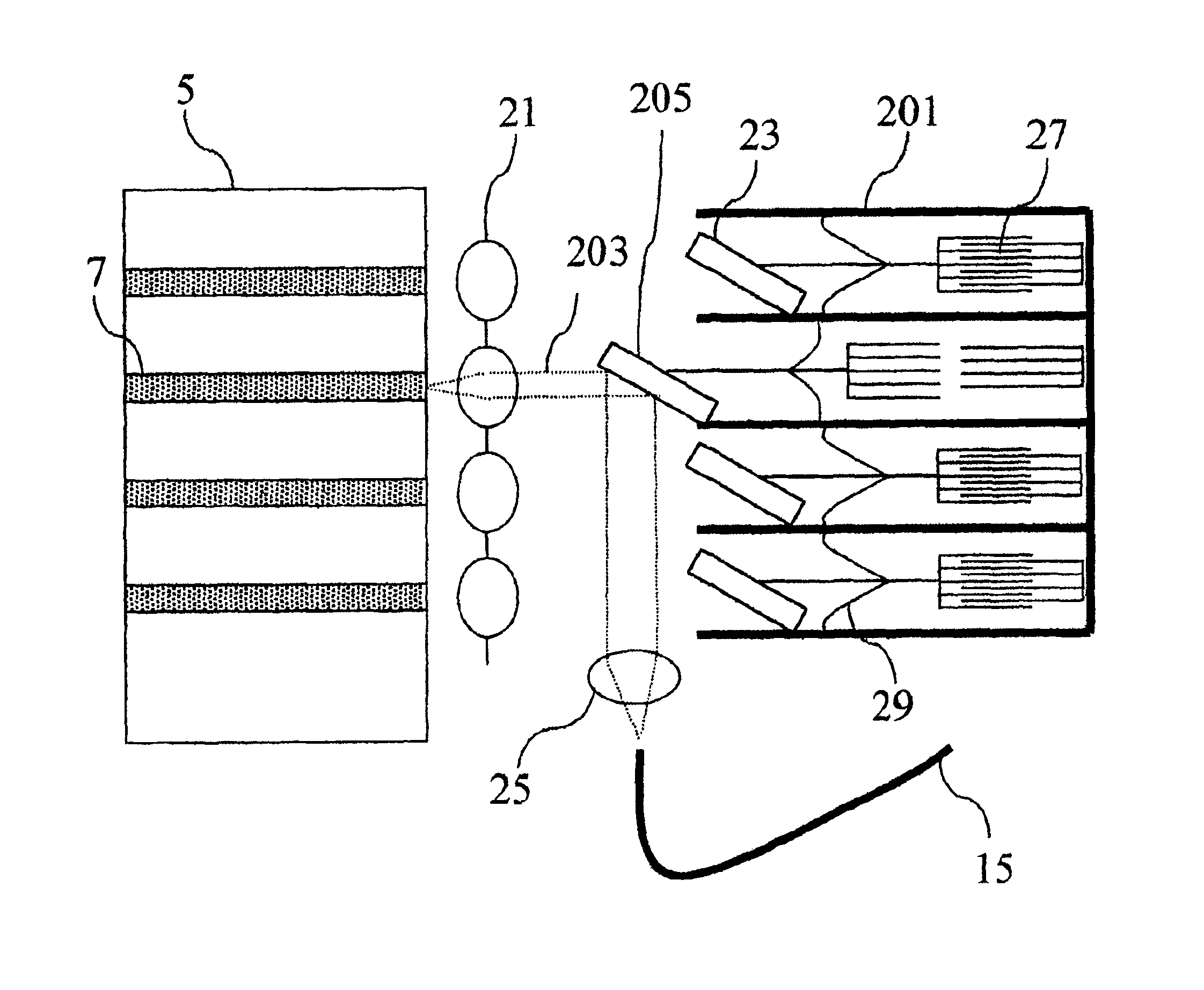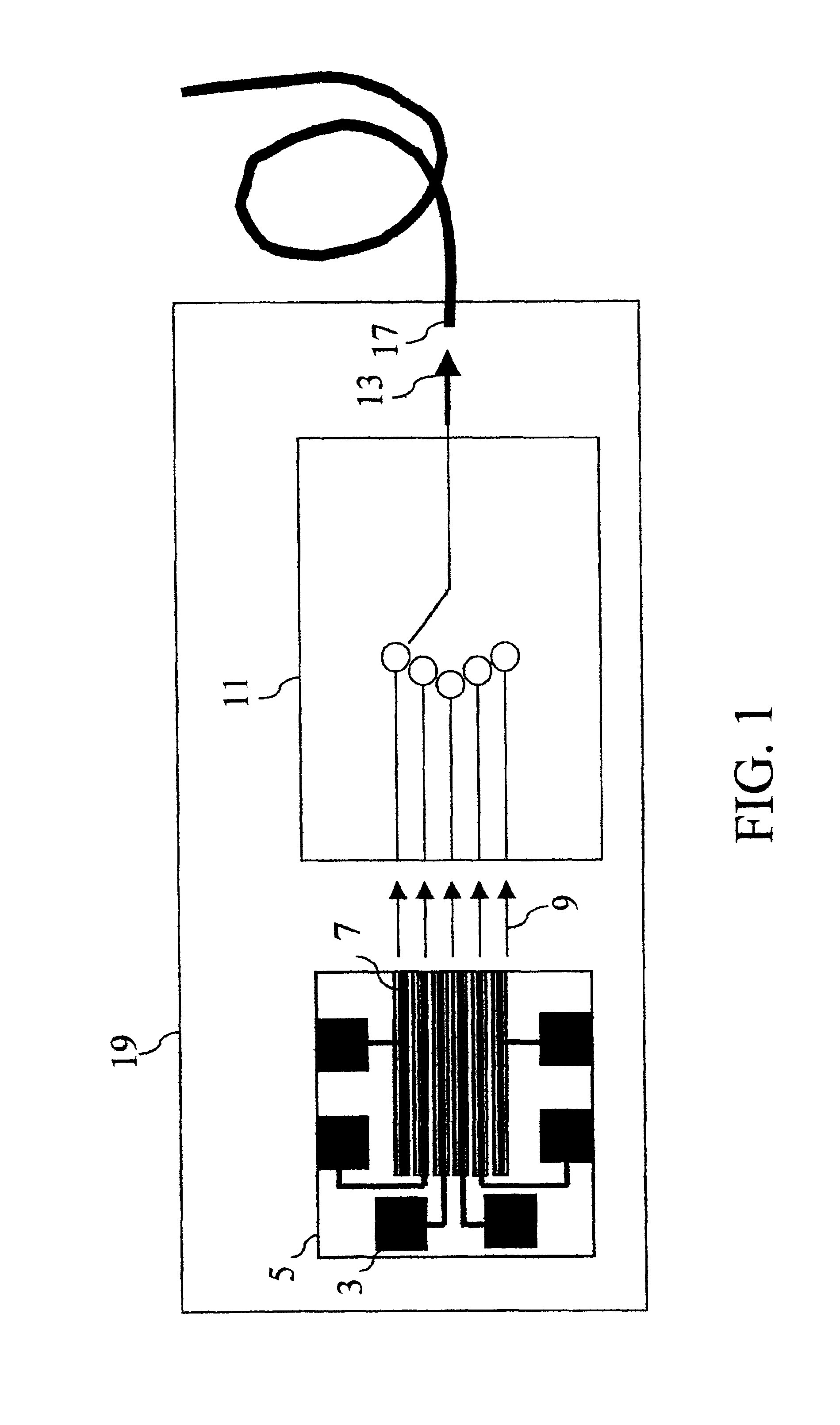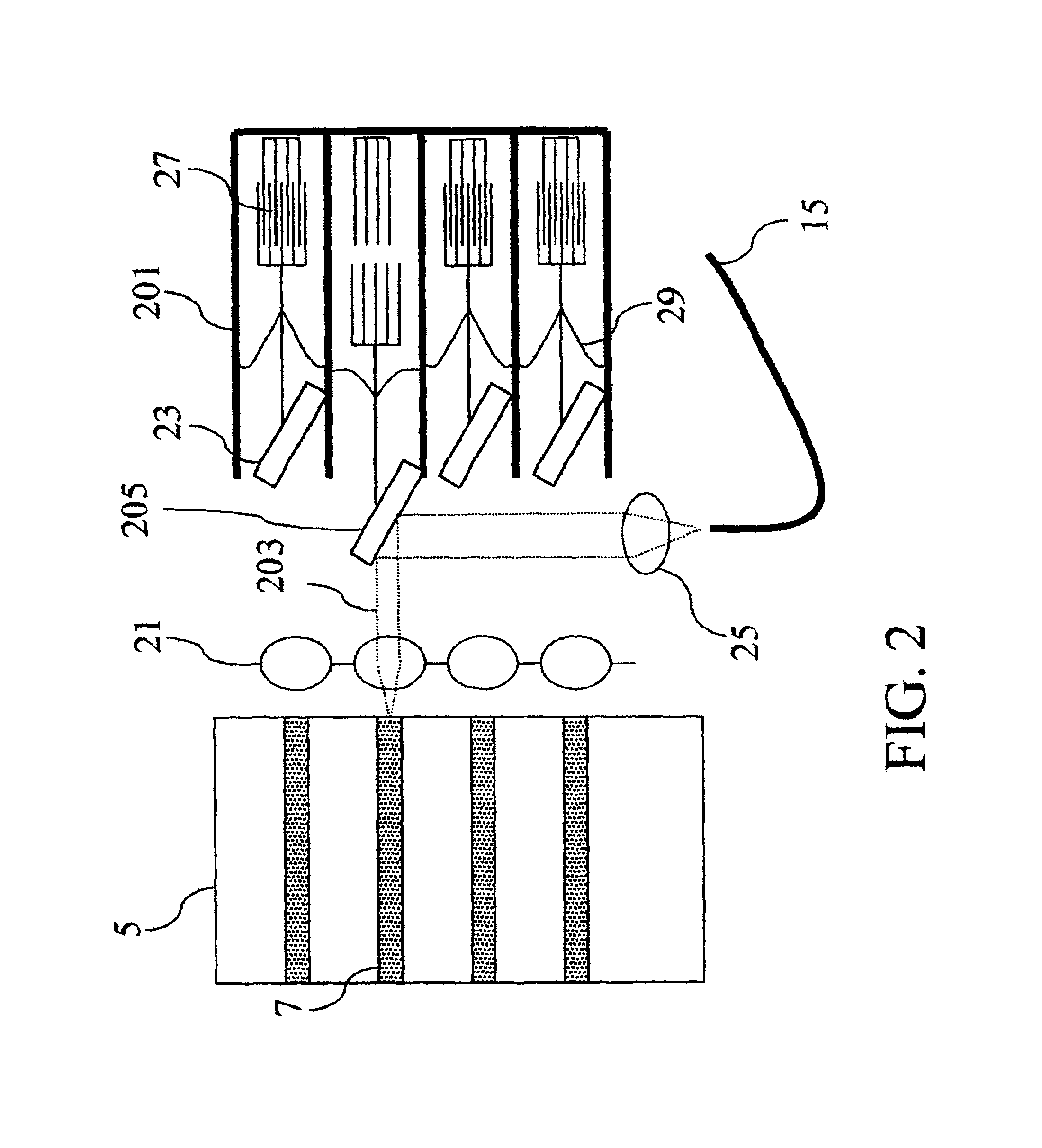Tunable controlled laser array
a laser array and control technology, applied in the field of lasers, can solve the problems of difficult to tune dfb lasers to other wavelengths, difficult to cover a large part of a communication band,
- Summary
- Abstract
- Description
- Claims
- Application Information
AI Technical Summary
Benefits of technology
Problems solved by technology
Method used
Image
Examples
embodiment 1300
[0059]FIG. 13 illustrates an EO deflector embodiment 1300 of the present invention, in which EO deflector 120 is used to steer the optical beam. As in previous embodiments, optical beam 99 from particular lens element 7 of laser array 5 is collimated with fixed lens 121, and then transmitted to EO deflector 120 which steers collimated beam 125 to the focusing lens 128. Focusing lens 128, in turn, directs the axis of the cone of light 98 to be focused on, and maximally coupled to, fiber 15. A electro-optic modulator exhibits a predetermined amount of birefringence upon application of a voltage to a suitable crystalline material producing the birefringent effect. Although some materials are known to be naturally birefringent, others become birefringent only when a voltage is applied, thereby allowing for the presence and degree of birefringence to be controlled. Examples of suitable materials include, without limitation, barium sodium niobate, lithium niobate, potassium dihydrogen pho...
embodiment 1400
[0060]FIG. 14 illustrates an AO embodiment 1400 of the present invention, in which AO deflector 130 is used to steer the optical beam. As in previous embodiments, optical beam99 from particular lens element 7 of laser array 5 is collimated with fixed lens 131, and then transmitted to AO modulator 130, which steers collimated beam 135 to the focusing lens 138. Focusing lens 138, in turn, directs the axis of the cone of light 98 to be focused on, and maximally coupled to, fiber 15. Typically in an AO deflector, an optical beam is diffracted by a column of sound passing through a suitable AO medium. An acousto-optic interaction occurs in an optical medium, for example, when an acoustic wave and a laser beam are present in the medium. When an acoustic wave is launched into the optical medium, it generates a refractive index wave that behaves like a sinusoidal grating. In general, it is desirable to couple a piezoelectric transducer to the AO medium, because a predetermined voltage appli...
PUM
 Login to View More
Login to View More Abstract
Description
Claims
Application Information
 Login to View More
Login to View More - R&D
- Intellectual Property
- Life Sciences
- Materials
- Tech Scout
- Unparalleled Data Quality
- Higher Quality Content
- 60% Fewer Hallucinations
Browse by: Latest US Patents, China's latest patents, Technical Efficacy Thesaurus, Application Domain, Technology Topic, Popular Technical Reports.
© 2025 PatSnap. All rights reserved.Legal|Privacy policy|Modern Slavery Act Transparency Statement|Sitemap|About US| Contact US: help@patsnap.com



